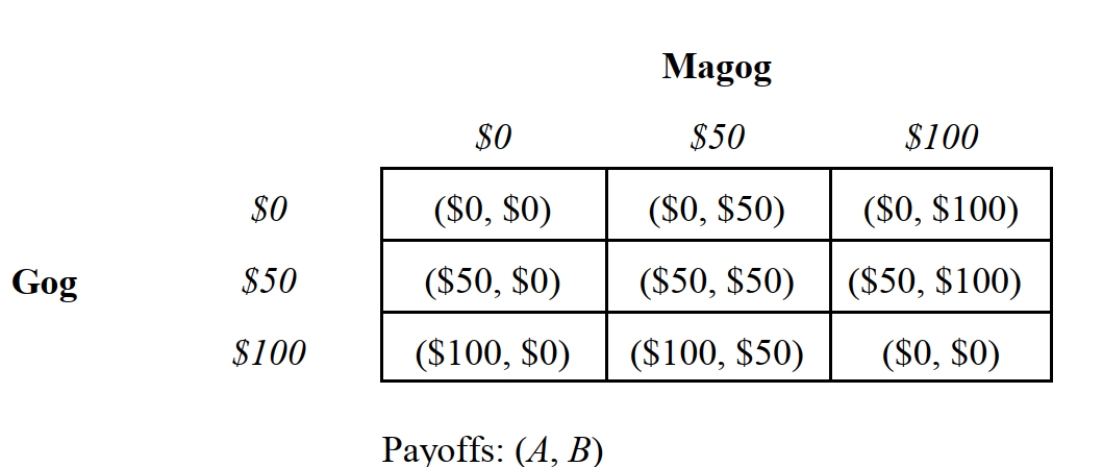Multiple Choice

-Consider the one-time Nash bargaining game depicted in Figure 12.2 in which Gog andMagog are bargaining over the distribution of $100. Bids must be in increments of $50. In this game, the sum of the players' bids cannot exceed $100. If the sum of the bids are less than $100, each bidder receives his bid, and the rest is forfeited to the Exchequer. If the sum of the bids exceeds $100, the bidders receive nothing, and $100 is forfeited to the Exchequer. The most likely explanation for the outcome of this bargaining game is the:
A) Savage theorem.
B) Bertrand paradox.
C) Cournot model.
D) Minimax theorem.
E) Stackelberg theorem.
Correct Answer:

Verified
Correct Answer:
Verified
Q10: Beanie wishes to purchase Cecil's house. The
Q11: Beanie wishes to purchase Cecil's house. The
Q12: Molly is interested buying Polly's antique doll
Q13: Beanie wishes to purchase Cecil's house. The
Q14: It is March and Ozzie wants to
Q16: Suppose that management and labor are bargaining
Q17: Molly is interested buying Polly's antique doll
Q18: The bargaining situation described in question 12.1
Q19: Suppose that management and labor are bargaining
Q20: Nash bargaining refers to:<br>A) A noncooperative, finitely-repeated